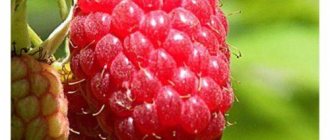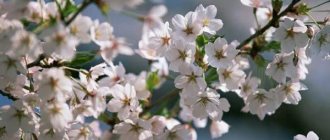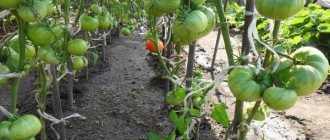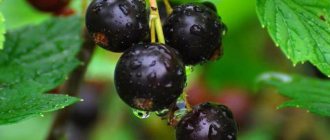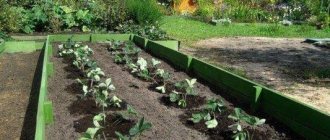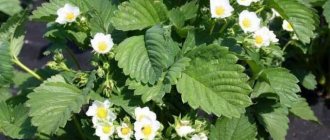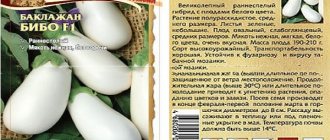Increasingly, domestic gardeners are choosing remontant varieties of raspberries. It is more resistant to diseases and pests, tolerates adverse weather conditions well and can produce two harvests per year. One of the most popular varieties of remontant raspberries is Golden Autumn.
How to plant remontant raspberries correctly
Planting raspberries can be done in several ways.
Everyone individually chooses what suits them. For this, the following options are used: dimple; grooved; trench; bush; capacitive.
All methods have been tested and are quite effective. The choice depends on whether you have enough strength to dig a trench or whether it’s easier to make holes. Depending on the size of the planned plantation, the possibility of how to properly fill the recesses with fertilizers.
Planting in containers
This is an excellent option when there is a shortage of land on small plots. To do this, you can use any unnecessary barrels or buckets with a diameter greater than 50 cm. The bottom is removed. The container is buried in the ground and at the same time filled with fertile soil mixed with fertilizers.
Trench planting method
The advantage of trenches is their long service life. Having mortgaged a plot, be sure that it will serve you for at least 10 years. This method frightens many because it is labor intensive. But for obtaining high future yields, it is considered the best. A sufficient amount of fertilizer is applied evenly into the trenches. They need to be prepared 3 weeks before planting. To do this, the place of the rows is marked with pegs. The most optimal trench sizes:
length –4-5 m; width – 60 cm; depth – 45cm.
A specially prepared soil mixture or nutrient mixture is added to the hole. Rotted manure or compost is placed at the very bottom. Under no circumstances should fresh manure be used. It will burn out the roots of young seedlings. Superphosphate and potassium salt or wood ash are evenly scattered on top. And at the very top is biohumus or vermiculate. Add a little of the removed fertile layer and mix with a shovel.
The roots are well spread out when the seedlings are placed in a trench. Make sure that they do not bend upward. Sprinkle with soil evenly; it should penetrate well between all the roots. Hold the seedling with your hand, trying to ensure that the level of the root collar is positioned correctly. Its optimal location is level with the surface. Deepening will lead to poor growth and even death. A high location will cause the replacement buds to dry out or freeze.
Planting is completed with watering and mulching. For good root survival, mulch is a must. It will prevent excessive evaporation and make the soil loose.
Planting in pits
An easier way. Well suited for fertile lands, when you do not need to add a lot of organic matter and minerals to feed the roots.
The recesses are made measuring 40*40*40 cm. The distance between them is 70 cm. The distance between the rows is at least 1.5 m. Before planting, you can keep the roots of the seedlings for a couple of days in water with a stimulator. This will revive their root system and increase survival rate.
The planting material is placed in the hole and the level of the root collar is monitored, filling the hole with soil. It should be flush with the surface. If the soil is sandy and can settle significantly, then the neck is deepened by 2-4 cm. Water the raspberries well. Each bush requires 5 liters of water. And sprinkle with mulch 7-10 cm thick.
Bush method
The planting scheme is carried out in such a way that the following distances are maintained:
1.2 m between adjacent bushes; 1.6 m between rows.
By the 3-4th year of cultivation, the bushes become lush and highly productive. They are easy to care for and convenient to pick berries. When pruning, up to 10 strong shoots are left in each bush. Weak and diseased branches are removed during pruning.
Furrow or row method
The shoots are planted in furrows up to 40 cm deep. The entire root system of the seedlings should fit into them. If fertilizers were not applied when digging the soil, they should be applied to the furrow. To do this, use: compost, superphosphate and potassium salt. Planting material is placed in a row at a distance of no closer than 70 cm. The correct straightening of the roots and the level of the root collar are monitored. Sprinkle with top fertile soil.
Growing and care
The absence of problems in cultivation makes this variety increasingly popular among modern gardeners. However, for favorable growth, one should not forget about the most important agricultural practices.
Watering
The rhizomes of Nugget are located no deeper than 35 cm. The variety is tolerant of minor droughts during the summer. However, during the period of fruit formation, it is recommended to water raspberries regularly and abundantly. In addition, evening and morning spraying will not be superfluous, which will help to favorably tolerate dry air in the hot summer.
The critical air humidity for Nugget is considered to be 40%. With a sharp decrease in humidity, ground shoots require daily moisture.
Trimming
Remontant raspberry Nugget needs regular pruning. If gardeners aim to get one autumn harvest, in the fall all the stems are cut off at the root. This pruning also protects raspberries from the spread of harmful insects and diseases, and simplifies the preparation of raspberries for winter.
If raspberries are grown using the technology of ordinary garden raspberries, then in the fall all fruit-bearing shoots are cut out flush with the ground, and the young shoots are bent down to protect them from frost. The trunks that are not pruned in the fall undergo a thorough check in the spring: dried, diseased, broken branches are cut out. For 1 sq. m. there should be up to 14 shoots, per bush - up to 6 stems.
Top dressing
Nugget, like any other remontant variety, intensively consumes nutrients from the soil, so the soil must be well fertilized.
The first feeding is carried out in the third year of the bush’s life. Until this time, the raspberries will have enough nutrients added to the trench during planting.
In the spring, nitrogen fertilizers are applied to the Nugget variety. This can be urea or mullein solution, diluted in a ratio of 1 to 4 with water.
In summer, potassium supplements are relevant, which allow you to get good berry harvests. The most commonly used is potassium salt.
In the fall, phosphorus (most often Superphosphate) is added, which helps raspberries better prepare for winter and tolerate the dormant period well.
After applying any fertilizer, the plants are thoroughly watered to avoid burning the root system.
Preparing for winter
Raspberries need mulching. An impressive layer of peat, straw or dry humus will not only protect the root system from freezing, but also enrich the crop with nutrients for the next season.
Despite its winter hardiness, the Nugget raspberry needs additional shelter in frosts above -30° C, as well as in snowless winters. In these cases, experienced gardeners bend the stems to the ground, manually sprinkle them with snow or cover them with agrofibre.
Harvesting and storage
The dense berries of Golden Autumn have good shelf life, but to increase shelf life, the crop must be harvested in dry weather and not washed until consumed. In this case, raspberries can remain in the refrigerator for up to 15–20 days, almost without losing their freshness . However, if the crop is planned to be processed, it is advisable to do this as soon as possible after harvest, since each day the fruit is stored reduces its nutritional value and increases the amount of waste.
Beautiful and well-shaped Golden Autumn berries are great for freezing, so if the housewife doesn’t have time to prepare compotes and jams, they can be prepared for the whole winter in literally a matter of minutes.
Absolutely dry berries should be frozen; after washing, it is almost impossible to dry raspberries while maintaining their original appearance. Therefore, for this type of preparation, it is better to select the cleanest fruits hanging on the upper branches, which can be consumed unwashed.
In addition to traditional harvesting methods, you can make excellent wines and liqueurs from raspberries. Experts argue about the suitability of white varieties for these purposes, but among winemakers there are those who consider such drinks to be a very worthy alternative to classic white wine. In addition, raspberries blend well with other berries, such as currants, gooseberries or cherries.
Diseases and pests
The August miracle raspberry is highly resistant to various diseases and pests, but in rainy weather and high humidity, fungal diseases may appear. In this case, a grayish coating and brownish spots appear on the bushes. The leaves begin to deform and die. To protect against such diseases, treatment with Bordeaux mixture and fungicidal preparations such as Oxychom, Fitosporin, and Fundazol are used.
Important! During the period of flowering and the appearance of berries, insecticidal agents have limitations in their use, since they can negatively affect human health.
In dry and hot summer weather, raspberries can be affected by ticks, weevils, aphids, flies, caterpillars and other insect pests. In this case, chemicals like Actellik or Karbofos come to the rescue. Spraying with preparations to prevent the appearance of pests is carried out in the spring, before the appearance of color, and in the fall - before the onset of cold weather.
Treatments with ash, garlic, tobacco and onion infusions help well. It should be noted that the main prevention of the occurrence of diseases and pests is compliance with agricultural techniques for growing a given plant crop
Advantages and disadvantages
The Golden Autumn raspberry variety has many advantages for which gardeners and gardeners love it :
- good external, taste qualities;
- the pulp has a dense consistency, the berries do not wrinkle during transportation even over long distances, they retain their taste and presentation;
- the fruits are eaten in their natural form, made into jam, and frozen for the winter;
- Compared to traditional red raspberries, golden berries have a higher vitamin C content.
Flaws:
- medium-sized berries;
- low yield;
- does not tolerate drought - without watering the yield decreases;
- low winter hardiness and wind resistance;
- weak immunity to diseases and pests.
Description of the variety
The mid-season variety Nugget is famous for its resistance to drought and extreme cold. In addition, it is not sensitive to fungal infections.
The bushes are medium-sized, but some stems reach a height of 200 cm. With the exception of individual trunks, the entire bush does not need to be tied to a trellis. The foliage is large, rich green. Fruit branches reach a length of 30 cm, each of them produces 15-20 berries.
The fruits are large (up to 13 g), conical in shape, with a rich sweet and sour taste. Up to 4 kg are harvested from one bush per season. juicy berries. The drupes are small, strongly adhered to each other, and the seeds cannot be felt when eaten.
Ripening begins in the second decade of July and continues until the first frost.
The nugget produces a small amount of shoots, thanks to which it successfully coexists with any other garden crops without inhibiting their growth and development.
APPLE TREE “GOLDEN AUTUMN”
Autumn variety
Fruiting is early and fairly regular throughout the years.
At the age of 14, apple trees produce 150-160 kg of fruit, at the age of 18 - 200-250 kg. The fruits are highly marketable and their resistance to scab is average. The harvest is harvested at the end of August, the fruits ripen in the first ten days of September, and they are stored until the end of September. The autumn apple tree variety Golden Autumn has been zoned in the Tambov, Lipetsk, Oryol, and Belgorod regions and is undergoing extensive production testing in other regions of the Central Black Earth Zone. Tree Golden Autumn apple trees stand out for their strong growth, powerful foliage, large dark green leaves with large stipules. The fruit bags are very large. Very large fruits of light cream color.
Golden Autumn apple trees are vigorous, at the age of 18 years their height reaches 5.2 m, crown diameter - 6.2 m. The crown shape of the apple tree is round-oval or oval at a young age, during the period of full fruiting it is stack-shaped. The crown density is average and has powerful foliage. The skeletal branches are thick, extending at a rather acute angle, but their attachment to the trunk is strong, the bark of the skeletal branches is greenish-brown. Branching is average. Strong growth shoots develop from the top two or three buds of the annual growth; subsequent buds produce shortened shoots or rosettes of leaves. Two or three buds remain dormant at the base of the shoot. There are many semi-skeletal branches in the crown. Overgrown perennial branches such as twigs, ringlets, and complex fruits evenly cover the skeletal branches to the base. Fruiting is mixed, fruits are formed on twigs, ringlets and partly at the ends of annual growths, which ensures annual fruiting for up to 20 years. Later it becomes clearly periodic. In a harvest year, one or two strong growth shoots develop on the fruit bags; in years of a strong harvest, two shortened shoots and, less often, rosettes of leaves. The shoots are of medium thickness, the bark is dark brown, the pubescence is weak, the growth pattern is raised. The leaves are large, dark green in color, broadly oval in shape, the relief of the blade is wrinkled, the base of the leaf blade is flat. The tip of the apex is clearly defined, the serration of the leaf edge is large, single- or double-toothed. The downward curvature of the plate is strong, the edges are slightly wavy, slightly raised, and the folding is weak. The plane of location of the leaf blade with the shoot axis forms an obtuse angle. The pubescence of the underside of the leaf is medium, the upper side is matte. The petiole is short, thick or of medium thickness, slightly pubescent, colored on the underside. The stipules are very large.
Two-year-old seedlings are distinguished by their exceptionally strong growth and powerful development. Their stem is straight, slightly geniculate, thick with a slight slope, its diameter at the base is 1.9-2 cm, under the crown 1.6-1.7 cm. The bark is tobacco-colored. Lentils are sparse, small, round, convex, pink. The shoot-forming ability of the Golden Autumn variety is average. The side shoots are long, thick, straight. The bark is light, like on a trunk. There are few lentils, they are small. Axillary buds are medium. The angle of departure of the shoots is large, acute, less often straight. The crown is spreading.
Fruits The fruits are mostly large in size, the average weight of the fruit is about 200 g, the maximum weight reaches 310 g. The shape of the fruit is rounded-elongated, less often round, regular, and of the same type. The surface of the fruit is slightly bluntly ribbed, the ribbing is more pronounced on the side of the calyx, but there are fruits with an almost smooth surface and occasionally with large ribs, weakly lobed, with weakly expressed constrictions. The color of the fruit is attractive, without blush, light cream, greenish-yellow when picked. There is a slight tan on the illuminated side. The skin is thin, tender, smooth, with a slight waxy coating. Subcutaneous points are few, barely noticeable, small, light green, there are very few of them at the base of the fruit, they become denser towards the top. The peduncle is long, rather thick, with a significant thickening at the point of attachment to the fruit sac, pubescent. It comes out of a rather deep, not very wide funnel. Sometimes the recess is slightly rusty, the walls are coarsely ribbed. Some fruits have swellings at the base of the stalk. The calyx is closed, of medium size, located in a narrow, medium-depth saucer with steep, strongly folded or strongly grooved walls. The pulp is white, the skin is slightly greenish, coarse-grained, quite dense, very juicy, slightly spicy, refreshing, pleasant sour-sweet taste, table quality. The subcalyx tube is wide and rather deep, elongated-conical in shape, and does not communicate with the seed socket. The seed nest is large or medium in size, broadly bulbous in shape, covering up to half of the subcalyx tube, strongly outlined by vascular bundles. Seed chambers are open or semi-open.
Disease resistance / Winter hardiness The variety has good winter hardiness, but poor resistance to scab.
Amber
Amber is a variety of summer raspberry with yellow berries, obtained from the Cumberland chokeberry variety. The bushes are flexible, tall, thorny, and require obligatory gartering to a trellis. The berries are round, yellow-orange with a bluish bloom, collected in clusters of 6-10 pieces. The drupes are medium in size and weakly felt. The berries are juicy, fleshy, aromatic, with a taste somewhere between raspberries and blackberries. They are easily separated from the stalk - like ordinary raspberries, they do not wrinkle or flow when picked. The bushes do not sprout, do not “spread” over the area, propagation is carried out following the example of blackberries - by rooting the tops. Productivity is high, can reach 5-6 kg. from the bush. Fruiting begins in mid-July.
Description with photo and brief description
The bushes of this variety of raspberries are not too tall - about one and a half meters. They grow quickly, forming a dense raspberry patch. Young shoots are green, while old bushes have brown stems. There are not very many thorns.
Appearance of berries:
- golden color;
- slight pubescence;
- cone shape;
- weight up to 5 g.
The main feature of this beauty is late fruiting . The berries are harvested from the second half of August until frost. It turns out that the garden crop has a wonderful name. It reflects both the color of the berries and the time of harvest.
General rules for caring for remontant raspberries in the fall
Watering
Over the summer, the soil under the raspberry tree gives the plant a large amount of nutrients and moisture. In order to maintain the bush after picking the last berries, you must remember to water it in the fall. This is most relevant for the southern regions of Russia, where autumn is warm and dry, and winters have little snow. There, moisture quickly evaporates or freezes, so it is recommended to carry out autumn and winter watering before the onset of frost. In the middle zone, autumn is most often rainy, so the last time you can water the raspberries is in early September, the main thing is to shed the soil to a depth of 40-45 cm.
It is important to remember that warm weather in autumn and moist soil can stimulate the growth of new shoots and shoots, this will deplete the soil, and the young branches that have grown will die in the winter without having time to get stronger. Therefore, autumn watering needs to be controlled depending on the climatic zone and weather conditions, and also accompanied by pruning of plants
Top dressing
In autumn, raspberries need fertilizing not for vegetative growth, but for maintenance after fruiting and the formation of fruit buds, so the soil is fertilized with humus and minerals, and nitrogen fertilizers are left for fertilizing in early spring. Autumn fertilizing is best done after pruning the bushes into moist soil.
Potassium salt, superphosphate or any complex fertilizers containing these minerals are applied one teaspoon per bush. Humus will need a bucket per bush. The principle - the more, the better, is applicable only on sandy terrain, where the dose of fertilizing can be doubled.
Preparing for winter and protecting against rodents
If not all shoots of remontant raspberries are cut out before winter, then they need to be removed from their supports, tilted low to the ground, secured, and covered. This must be done in any climate zone. In the northern regions and in the central zone, bushes are bent to protect them from frost with snow cover, and in the southern regions with little snow they are protected from temperature changes and cold winds.
Geotextiles or available materials are used as insulation: thick cardboard, polystyrene foam, perforated polyethylene film.
If the entire above-ground part of the bush is cut out before winter, then to protect the roots the rows are mulched with peat, straw, humus, and sawdust. But, without fail, they first clear the ground of old leaves and branches, as pests may remain overwintering in them.
Not only frosts are terrible for raspberries. Mice and hares also harm plants in winter. To protect against rodents, gardeners wrap or weave the root part of raspberry shoots with tapes of film or burlap, and in winter they trample snow over the raspberry trees.
Why don’t remontant raspberries bear fruit/ripen in the fall?
Fruiting of remontant raspberries on the shoots of the first year is determined by the genetics of the species. This cannot be influenced by any factors except one - changing the variety when purchasing cuttings. By planting ordinary raspberries, cutting off all the shoots in winter, like remontant ones, you will get shoots without ovaries every season. Try saving some of the branches for next season. If they produce berries only in the second year, then they are ordinary raspberries.
The ripening of the second, autumn harvest depends on the climatic zone and weather conditions. In the Leningrad, Moscow regions, the Urals and Siberia, summer is short, and in autumn there are few sunny days. For these regions it is recommended:
- grow remontant raspberry varieties in a two-year crop, i.e. Leave non-bearing branches for the second year. In the summer, you won’t have to wait for new shoots to grow and begin to bear fruit. Last year's branches will begin to bloom in May, and by mid-July they will produce their first harvest. In August, the first-year berries will begin to sing. Unripe fruit clusters from the autumn harvest are cut and dried. In winter, brewed in a teapot, they serve as a source of vitamins, like leaves and ripe berries;
- grow raspberries with remontant varieties exclusively on the south, sunny side, on a hill or on a slope. In the lowlands in spring, the frozen ground takes a long time to thaw, the bushes grow later, and the shade slows down the ripening of the berries;
- pruning the bushes in a timely manner so that there is no excess shade for the berries;
- control soil fertilization. Lack or excess of fertilizers also affects the ripening time.
Landing
According to experts, the optimal time for planting raspberries of this variety is September or October. The crop planted during this period will reward you with a generous harvest in the coming year.
Purchase of planting material
When choosing seedlings, pay attention to the condition of the roots and shoots. The roots should be free of dried areas, and the shoots should be straight and undamaged
It is not recommended to purchase seedlings during the growing season, as they do not take root well. It is possible to purchase plants with an open or closed root system.
Choosing a landing site
The place that is most sunny and protected from winds and drafts is allocated for placing raspberries. The occurrence of groundwater is allowed no closer than 1 m to the surface. It is optimal if the selected area previously had lupine, mustard, rye or peas. Tomatoes, potatoes and peppers are undesirable as predecessors.
Soil preparation
The area for planting is prepared in advance. They dig up the ground and remove weeds. Two buckets of humus and 300 g of complex mineral fertilizers are added per 1 m2. Acidic soils are pre-limed.
Landing technology
Shoots are planted in trenches or in separate bushes. Depending on the method chosen, holes or trenches are dug. The distance between the bushes is 70 cm, between the rows - 120 cm. The depth is selected so that the root collar is at the level of the ground surface.
Seedlings with an open root system are immersed in water for several days with the addition of a root growth stimulator, while those with a closed root system are shed generously with water and only then removed.
The shoot is lowered into the hole, sprinkled, carefully compacted, watered at the rate of 5 liters of water per plant, then mulched with peat.
Planting on time in compliance with all recommendations and further competent care have a positive effect on the yield.
The needs of the Golden Autumn raspberry are modest, but they must be satisfied. Complete care consists of the following procedures:
- watering. As a rule, water with slightly warm water from a hose. At the same time, make sure that the soil is wet at least 30 cm deep. The frequency of watering is once a week, in the absence of precipitation the frequency is increased;
- loosening. The first time loosening is carried out at the beginning of the year, before the buds swell; as a result, the roots are saturated with oxygen and the shoots grow faster. Loosen the soil to a depth of 8 cm, while weeding;
- feeding If all recommendations are followed during planting, the crop will have enough nutrients for two seasons. Starting from the third, organic matter is added: a noticeable result is obtained by using a mullein solution (in a ratio of 1 to 10). This liquid fertilizer is used 2–3 times per season during the active growth phase. Mineral fertilizers (for example, Nitroammofoska) will also be useful; they are applied in the spring, as soon as the snow has melted;
- pruning In the fall, after harvesting, all shoots are removed at the root. In the spring, when the newly formed shoots grow by 10–15 cm, cut out the damaged and weakest ones.
Despite the ease of care, raspberries will give a decent harvest only to those who follow these simple rules.
Feeding and watering
To plant seedlings, choose either early spring (the month is determined depending on the region) or mid-autumn. Like many other raspberry varieties, this one claims to be the brightest area of your garden. If you want more berries and fewer problems with care, then you should choose a place along the southern wall of a house or other building. This will provide reliable protection from the wind and the bushes will not hurt.
The soil in the place you choose must be fertilized in advance: for each square meter, add a couple of buckets of manure and 0.3 kg of complex fertilizers. The culture responds very well to feeding and fully displays its positive qualities.
Basic rules of watering:
- moderate humidity is required;
- use only warm water;
- frequency – once a week;
- the soil should be moistened to a depth of 30 cm;
- The result of the procedure is loosening.
In fact, the variety is very unpretentious! For example, if you added the required amount of fertilizer when planting, then next year you can relax and harvest without much labor involved in caring for the plant. You don’t have to think about feeding! But in the third year you need to help the bushes and give them more nutrients. Apply organic fertilizers, such as diluted manure, a couple of times during the summer. Nitrogen fertilizers will be required in the spring.
Raspberries that don't bite
Raspberry Camel - a description of a variety that is little known, but should find a place in any gardening composition. Medium-sized bushes are free of thorns, which do not interfere with access to the dark burgundy fruits. Transportable berries have an excellent taste. The variety's resistance to diseases allows the yield to increase every year.
The Bryce raspberry variety is characterized by sufficient yield and early ripening. On thornless, erect stems there is a bright large berry, overripe specimens of which take on a dark red hue. Juicy and fleshy fruits weigh about 6-7 grams. and are characterized by a long storage period. Delicate and at the same time appropriate sourness will not disappoint with its sweet aftertaste. Already today there is a practice of growing thornless varieties of raspberries in greenhouses.
Raspberries are a favorite on your table. The description of the varieties presented in our article will provide you with ample opportunities for successfully managing a summer cottage.
Reviews
Ekaterina N : I bought seedlings at a gardening fair (the seller really praised the variety to me) and was not disappointed. We have been enjoying delicious yellow berries for three years now. Last fall it was very cold and rainy, so everyone thought - we wouldn’t really eat berries, but no, our beauty delighted us until the frost. Definitely recommend!
Sergey S : For me, this is one of the best varieties of remontant raspberries. I planted it in a sunny place in the corner of the garden, where it is less windy, I fertilize it on a schedule, prune it, and from the end of summer until the first frost, the whole family harvests it.
Care
It is important to keep the soil near the raspberries loose so that the roots receive enough air. The first time the soil should be loosened, weeding at the same time, at the moment of swelling of the buds
The plowing depth should be about 6-8 cm. Subsequently, the soil is loosened as needed, based on the condition of the top layer of soil (do not allow crust formation).
It is advisable to water the raspberries with pre-settled warm water from a garden barrel. Depending on the summer, abundant watering is performed 1 to 2 times. The soil should get wet to a depth of 25-30 cm.
Depending on the time of application, fertilizing can be divided into 3 categories:
- In the spring, immediately after the snow melts, you should use Nitroammofoska or other nitrogen fertilizers.
- In summer, fertilize with slurry twice or three times in a concentration of 1 to 10.
- In autumn, raspberries should be fed with potassium-phosphorus fertilizers.
Since fruiting of remontant raspberries occurs on annual shoots, you can safely prune them at the root in the fall. In the spring, after the appearance of young shoots, you can prune again. This time it will be enough to remove only weakened and damaged branches.
The good winter hardiness of the “Golden Autumn” variety does not require the construction of special shelters for the winter. After pruning, it is enough to mulch the tree trunk circles with leaves, sawdust or hay. If pruning has not been carried out, carefully bend the shoots to the ground and secure them in this position with metal rods.
Be aware that these yellow raspberries tend to grow quickly. After some time, it may begin to behave like a nasty weed.
Features of ripening and fruiting
Fruiting
Start
It has an average fruiting period, which begins 4–5 years after planting . The tree produces its first normal harvest in the 7th year.
Autumn Joy gives a full harvest in the 7th year.
Peculiarities
Fruiting occurs at the tips of shoots of the vegetative type, but, for the most part, on fruit twigs.
After ripening, the apples hold well on the branches. But it’s still better not to overexpose them.
Deadlines
Blooms
Blooms in May. The duration of flowering depends on the temperature. The lower it is, the longer the flowering will continue.
Fruit ripening and storage
The apples are poured in September. Storage in the refrigerator or cellar is up to two months . At the same time, the fruits do not lose their appearance and taste.
The fruits of the Autumn Joy apple tree ripen in September.
Reproduction
The nugget produces an average amount of young shoots. It is this that is the future planting material.
Sprouts with a clod of earth are planted mainly in the fall. Before the onset of cold weather, they have time to take root and adapt to a new place. For the winter, it is recommended to cover them with agrofibre or sprinkle them generously with snow.
The shoots are planted in pre-prepared trenches, into which an impressive layer of rotted organic matter and mineral fertilizers are placed. Sprinkle a small layer of soil on top. The trenches need to remain in this state for about a month; after this time, they are planted. The soil is well watered and a layer of mulch is applied on top.
In addition to shoots, the Nugget variety is propagated by root cuttings. This is done mainly in the spring in order to get friendly young shoots during the summer. Raspberries are dug up on one side, a root of 20 cm in length is removed. There must be at least two living buds on it, and the thickness of the root should not be less than 7-10 mm.
It is best to plant the root in a container, which can, if necessary, be moved under cover for better rooting and creating an optimal microclimate.
By autumn, young seedlings are transplanted to a permanent place. It is better to do this no later than mid-September so that the shoots have time to take root well.
History of the origin of the remontant variety
This unusual variety was obtained by Russian breeders. That is why it is perfect for our vegetable gardens. The variety was obtained in the Bryansk region, where a large number of new species of raspberries come from. Its creators are wonderful domestic scientists I. Kazakov and S. Evdokimenko.
The variety is bred on the basis of:
- elite varieties of raspberries;
- free pollination;
- use of remontant varieties for breeding.
Landing
The Indian Summer variety is best planted in places where there is a lot of light and protection from the north wind. The southern side of the site, adjacent to the house or other buildings, which will protect the raspberry bushes from drafts, is suitable
It is important that groundwater is no higher than 150 cm from the surface of the earth, since excess moisture will destroy the plant
It is not recommended to plant raspberries on the site of the former growth of nightshades (potatoes, tomatoes, eggplants). It is strictly prohibited to plant raspberries in places where they were previously planted.
The best time to plant the Indian Summer variety is September or October. In order for raspberry bushes to take root well, you must adhere to the following planting rules:
- a trench is dug 0.4-0.5 m deep and 0.5 m wide. The distance between rows should be 170-200 cm, between seedlings there should be a gap of 50 to 100 cm;
- Compost, humus and high-moor peat are placed at the bottom. Per 1 m2. You will need up to 3 buckets of this mixture, you can add a glass of mineral fertilizers to it.
- during planting, the root system of the plant is covered with a fertile layer of soil, then the soil is compacted;
- at the end of planting, each raspberry bush needs to be watered with 5-7 liters. water;
- To retain moisture near the roots, the soil is mulched with humus, peat or sawdust.
Care and cultivation
Considering that the main part of the Golden Dome raspberry harvest is concentrated on the upper part of the shoots, in the fall, they bend strongly to the ground under the weight, therefore, so that the branches do not break and the berries are not dusty and covered in dirty splashes, immediately after planting it is recommended to equip This raspberry has low supports for a garter.
Watering
The root system of the Golden Domes variety is superficial, so the bushes react painfully to the lack and excess of moisture in the soil. Particular attention should be paid to watering during flowering and fruit set.
It is important to remember that the soil in the raspberry garden must be moistened to a depth of at least 35-40 cm
Trimming
If Golden Dome raspberries are grown in a two-year cycle, then in spring and autumn it is necessary to carry out sanitary pruning of the bushes, i.e. remove dry, damaged, weak and fruit-bearing branches. During the season, there is no need to trim green shoots, their tops, or standardize flower stalks for this variety. If the variety is grown in an annual cycle, then before winter, before frost, all shoots are removed flush with the ground, the soil in the raspberry field is covered with peat or humus, the branches are taken out and burned.
Feeding
If fertilizers were applied to the site of the future raspberry tree before planting, as well as to the planting holes, then there is no need to feed it for the first 3-4 years. However, in subsequent years, regular feeding will be critical. In early spring and late autumn, you need to add rotted manure and compost to the soil. Before flowering and the beginning of fruit set, feed the Golden Domes with mineral fertilizers - potassium and superphosphate at the rate of 40-60 g, or wood ash at the rate of 0.5 kg. for one bush. Combine regular watering with fertilizing with herbal infusions.
Preparing for winter
Removing the above-ground part of the Golden Domes raspberry solves the problem of shelter from cold weather, winds, and rodents. Only the rhizome of the bush will overwinter, so the ground in this place is covered with humus, peat or sawdust. If the bush is left until winter, then this raspberry will not withstand frosts below 22-25 degrees. Covering measures are necessary: the bushes are bent to the ground, the root zone is covered, the branches are covered with any garden material. The best shelter is snow; from the beginning of winter the bushes are liberally covered with it.
Reproduction
The raspberry variety Golden Domes produces quite a bit of root shoots, so when weeding and loosening the soil under the bushes, you need to be careful not to destroy the shoots. They are separated from the main root with a shovel and, together with a lump of earth, are transplanted to a new place. For propagation, root shoots with buds are also used; they are grown separately, and green cuttings of young shoots are also used, which are grown in a greenhouse or under jars on the shady side of the building.
additional characteristics
Advantages and disadvantages
The main advantages are:
- High frost resistance;
- Stability of a good harvest;
- Presentation, size and dessert aroma of fruits;
- Good resistance to scab.
The downside is:
- Direct and sharp growth of skeletal branches;
- Poor formation of new shoots;
- Wood fragility in seedlings.
Sizes of an adult tree and annual growth
This is a tall apple tree.
Amateur gardeners note weak annual growth.
Productivity. Frequency of fruiting
The apple tree is distinguished by regular and stable annual harvests . With proper care and creation of the required conditions, it produces a harvest of about 90 kg. An adult 20 year old can produce up to 150 kg.
Autumn joy is characterized by regular and stable harvests.
Tasting assessment
This variety has white flesh with a slightly creamy tint. The structure is medium-dense, tender, juicy. With a sweet and sour dessert taste, spicy aroma and high sugar content. There is a high tasting score - 4.3.
Winter hardiness and disease resistance
It is resistant to winter temperatures. There is also an increase in immunity to diseases such as scab.
Watch the video of what the Autumn Joy apple tree looks like:
